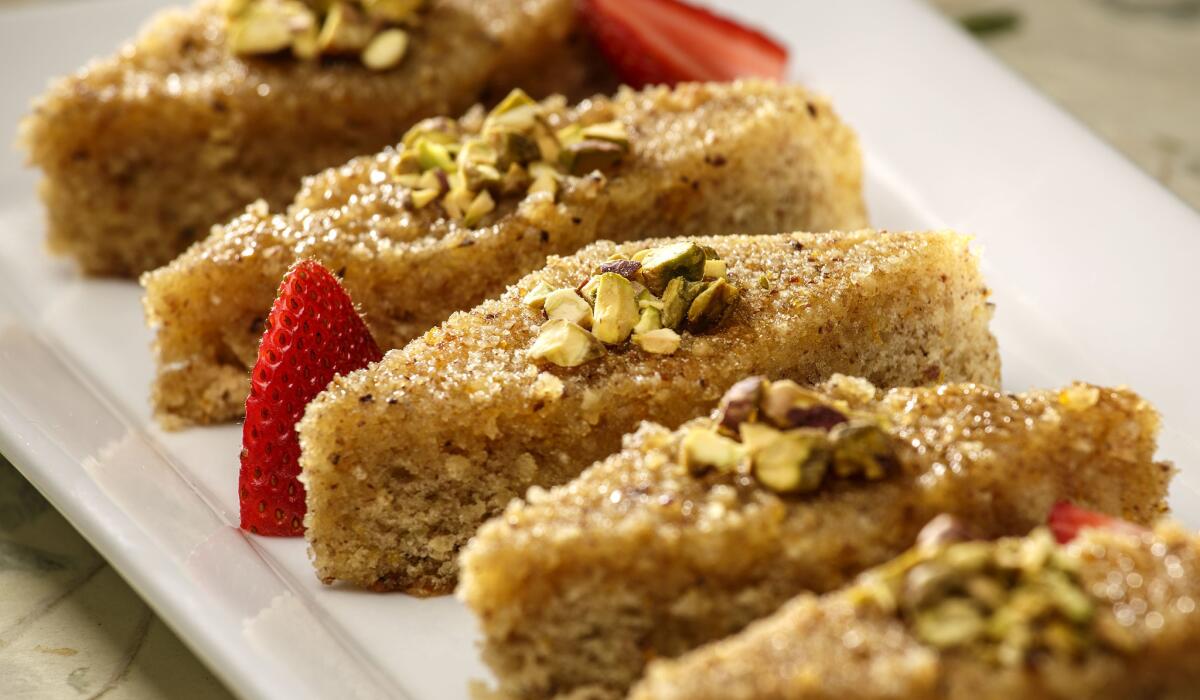Passover sweets use fresh nut meals for a rich, flavorful batter

When Passover approaches, some of us stock up on nuts. Not only are they pretty great on their own, but they’re perfect for baking for the holiday, when flour is forbidden, because they make it possible to bake cookies and cakes without flour. Nuts contribute flavor, richness and a pleasing texture to desserts from Europe as well as the Middle East — both regions with treasured Passover baking traditions.
One of our favorite French almond cookies is the country macaroon, often called a macaron rustique or macaron à l’ancienne. These are different from the colorful macarons de pâtissier that have become wildly popular in the last few years.
Since rustic macaroons have a higher ratio of almonds to sugar than the dainty pastry-shop macarons, they have a deeper almond flavor and an appealing, chewy texture. They keep longer and are moist enough so they need no filling. They are also much simpler to make. No piping skills are required; all you do is roll the batter into balls and set them on a baking sheet. These cookies need no flour, butter or oil — a great thing to consider for people with dietary as well as cultural restrictions.
Recipe: French country-style almond macaroons
Simple nut cakes become baklava cakes when they’re moistened generously using a technique similar to the one used for baklava. Syrup is ladled over the cakes, which first are pricked so they can absorb it easily. (This is different from the way that European bakers use syrup, which they dab in small amounts with a brush on cut cake layers.) With this Middle Eastern technique, the cake absorbs enough syrup so that you don’t have to frost it. Another advantage of using syrup is that, unlike typical frostings, there’s no butter or cream involved.
Baklava cake — also known as tishpishti and related to Greek-Turkish revani and to Middle Eastern basbousa and namoura — is usually made with flour, semolina or a mixture of both. For Passover, Jewish bakers replace this mixture with matzo meal. To make our Passover baklava cake wheat-free, we use potato starch.
Although you can find almond and hazelnut flour pretty readily these days, you can also easily make fresh nut flours at home by grinding nuts in a food processor. An important note: When grinding nuts to make a cake or cookies, it’s best to grind them with part of the sugar in the recipe in order to achieve a flour-like texture and to prevent the nuts from caking and turning into nut butter. Before being ground, hazelnuts are often toasted to enhance their flavor and to remove their skins. For light-colored almond desserts, it’s good to first blanch and peel the nuts; this also makes the flavor more delicate.
Nuts are nature’s answer to anyone who wants to bake wheat-free desserts — and they’re healthful too. And, of course, you don’t have to wait for Passover to make these nut-based cookies and cakes — bake them now, or any time during the year.
Faye Levy is the author of “1,000 Jewish Recipes,” “Healthy Cooking for the Jewish Home” and “Feast From the Mideast.”
More to Read
Eat your way across L.A.
Get our weekly Tasting Notes newsletter for reviews, news and more.
You may occasionally receive promotional content from the Los Angeles Times.










